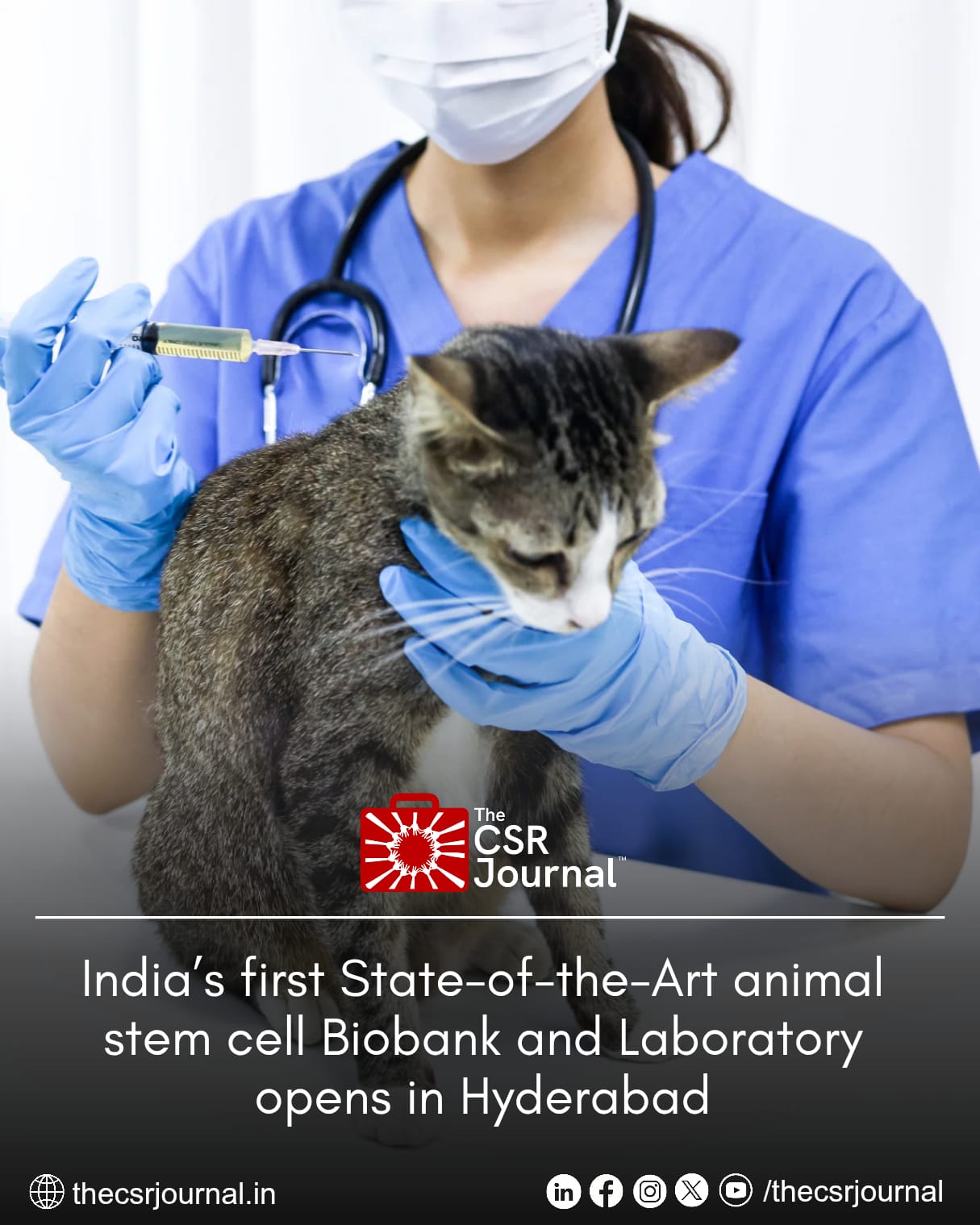Context:
On August 9, 2025, Union Minister Dr. Jitendra Singh inaugurated India’s first-of-its-kind State-of-the-Art Animal Stem Cell Biobank and Laboratory at the National Institute of Animal Biotechnology (NIAB), Hyderabad.
About Biobank:
Spread over 9,300 sq. ft and developed at a cost of ₹1.85 crore, the Animal Stem Cell Biobank will facilitate advanced research in regenerative medicine, cellular therapies, tissue engineering, reproductive biotechnology, and disease modelling for livestock.
Key Features of the Facility:
· Advanced Equipment: The 9,300 sq ft facility is equipped with cutting-edge technology, including stem cell culture units, 3D bioprinters, bacterial culture labs, cryostorage, autoclave rooms, and uninterrupted power backup.
· Research Focus: The laboratory will advance research in disease modeling, tissue engineering, and reproductive biotechnology, ultimately improving livestock health and productivity.
· Biobanking Capabilities: With support from the National Biopharma Mission (NBM) of DBT-BIRAC, the facility will enable biobanking of animal stem cells and their derivatives.
Other initiatives launched during the event:
In the same event, five breakthrough veterinary diagnostic tools were launched, targeting diseases such as brucellosis, mastitis, toxoplasmosis, and Japanese encephalitis, and promoting responsible antibiotic use to combat antimicrobial resistance.
· These innovations embody the “One Health” approach, integrating animal, human, and environmental health.
Implications for Agriculture and Economy
With agriculture accounting for 18% of India’s GDP and employing 60% of its workforce, veterinary health innovations are key to the envisaged “Evergreen Revolution”. Improved livestock health through cutting-edge diagnostics and stem cell research will boost productivity, farmer incomes, and agricultural GDP.
About One Health approach
The One Health approach is a collaborative, multisectoral, and trans-disciplinary strategy that recognizes the interconnectedness of human, animal, and environmental health. It aims to optimize the health and well-being of all three, acknowledging their deep interdependence.
Core Principles
· Interconnectedness: Human, animal, and environmental health are intricately linked.
· Collaboration: Requires coordination among sectors like public health, veterinary medicine, environmental science, and agriculture.
· Sustainability: Focuses on long-term solutions for current and future generations.
· Trans-disciplinary: Encourages knowledge integration and innovation across fields.
Importance of One Health
· Emerging Zoonoses: Over 60% of human infectious diseases are zoonotic.
· Food Safety: Animal health affects the quality and safety of food products.
· Antimicrobial Resistance (AMR): Requires unified action across humans, animals, and the environment.
· Climate Change: Affects all three domains of health, making integrated responses essential.
· Global Health Security: Prevents pandemics through early detection and response.
About National Biopharma Mission:
National Biopharma Mission (NBM), also called Innovate in India (i3), is a Department of Biotechnology initiative implemented by BIRAC. It aims to boost biopharmaceutical innovation in India by developing capabilities in vaccines, biosimilars, medical devices, and related products.
Conclusion
India’s first Animal Stem Cell Biobank signifies a transformative step in animal biotechnology, reflecting the government’s futuristic approach and robust policy support. The integration of advanced research infrastructure and innovative diagnostics will strengthen India’s position as a global biotechnology leader, ensuring enhanced animal health, sustainable agriculture, and economic growth.







